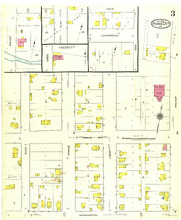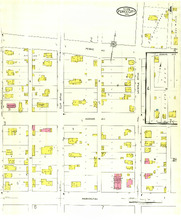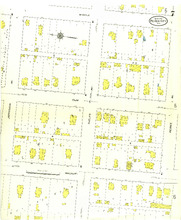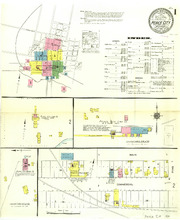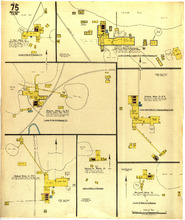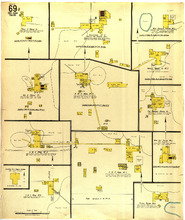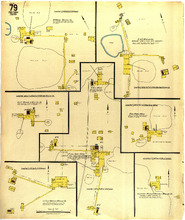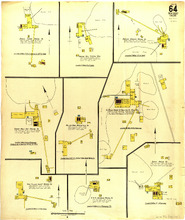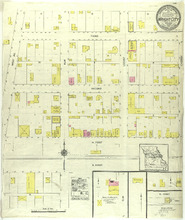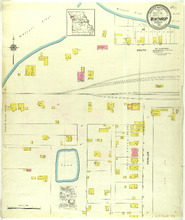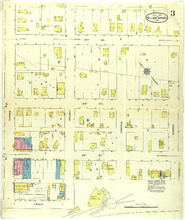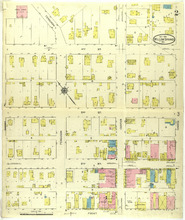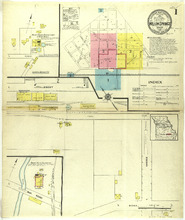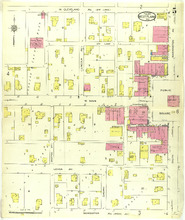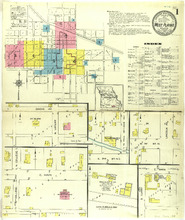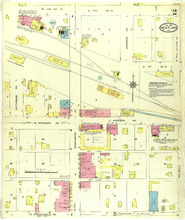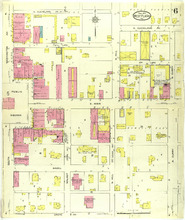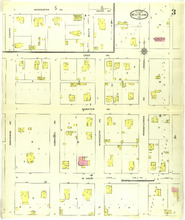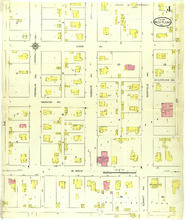Wright City, Missouri, 1912 November
Wright City, Missouri, November 1912. Streets: Third, Second, N. First, S. First, West Avenue, Elm, Locust, Cherry
Member of
Willow Springs, Missouri, 1914 October, sheet 3
Willow Springs, Missouri, October 1914. Streets: 4th (Fourth) Street, 3rd (Third) Street, 2nd (Second) Street, Front, Harrist, Walnut, Maple, Cherry
Member of
Willow Springs, Missouri, 1914 October, sheet 2
Willow Springs, Missouri, October 1914. Streets: 4th (Fourth) Street, 3rd (Third) Street, 2nd (Second) Street, Front, Summit, Ferguson, Center, Harris
Member of
Willow Springs, Missouri, 1914 October, sheet 1
Willow Springs, Missouri, October 1914. Index; Streets: Front, Ava Road, Harris
Member of
West Plains, Missouri, 1914 February, sheet 5
West Plains, Missouri, February 1914. Streets: W. Cleveland Avenue, 3rd (Third) Lane, 4th (Fourth) Lane, W. Main, Leyda Avenue, Worcester Avenue, Grove Avenue, Shuttee Street, Lincoln Avenue, South, Wasington Avenue
Member of
West Plains, Missouri, 1914 February, sheet 1
West Plains, Missouri, February 1914. Index; Streets: Grove Avenue, E. Main, S. Locust, N. College, S. College, E. 2nd (Second) Street N. N. Hill, St. Louis Avenue, Lincoln Avenue, W. 1st (First) Street N., E. Main, S. Curry
Member of
West Plains, Missouri, 1914 February, sheet 2
West Plains, Missouri, February 1914. Streets: W. 2nd (Second) Street N., E. 2nd (Second) Street N., W. Michigan Avenue, E. Michigan Avenue, W. Cleveland Avenue, 3rd (Third) Lane, E. Celveland Avenue, Jefferson Avenue, Washington Avenue, Jackston Avenue, N. Hill, St. Louis Avenue, E. 1st (First) Street N.
Member of
West Plains, Missouri, 1914 February, sheet 6
West Plains, Missouri, February 1914. Streets: E. Cleveland Avenue, 4th (Fourth) Lane, E. Main, Hazel, Grove Avenue, Washington Avenue, Sourth, Walnut, Park Avenue, S. Hill, St. Louis Avenue, N. Hill, N. Curry, S. Curry, 3rd (Third) Lane
Member of
West Plains, Missouri, 1914 February, sheet 3
West Plains, Missouri, February 1914. Streets: Worcester Avenue, Grove Avenue, cHerry, South, Cass Avenue, Webster Avenue, W. Main, Arkansas Avenue, Nebraska Avenue, Minnesota Avenue, Pennsylvania Avenue
Member of
West Plains, Missouri, 1914 February, sheet 4
West Plains, Missouri, February 1914. Streets: Cass Avenue, Webster Avenue, W. Main, Franklin Avenue, Missouri, Avenue, Garfield Avenue, W. Cleveland Avenue, Summit Avenue
Member of
Westboro, Missouri, 1916 December
Westboro, Missouri, December 1916. Streets: Jefferson, Adams, High, 1st (First) Street, Main, 2nd (Second) Street, Monroe, Main
Member of
